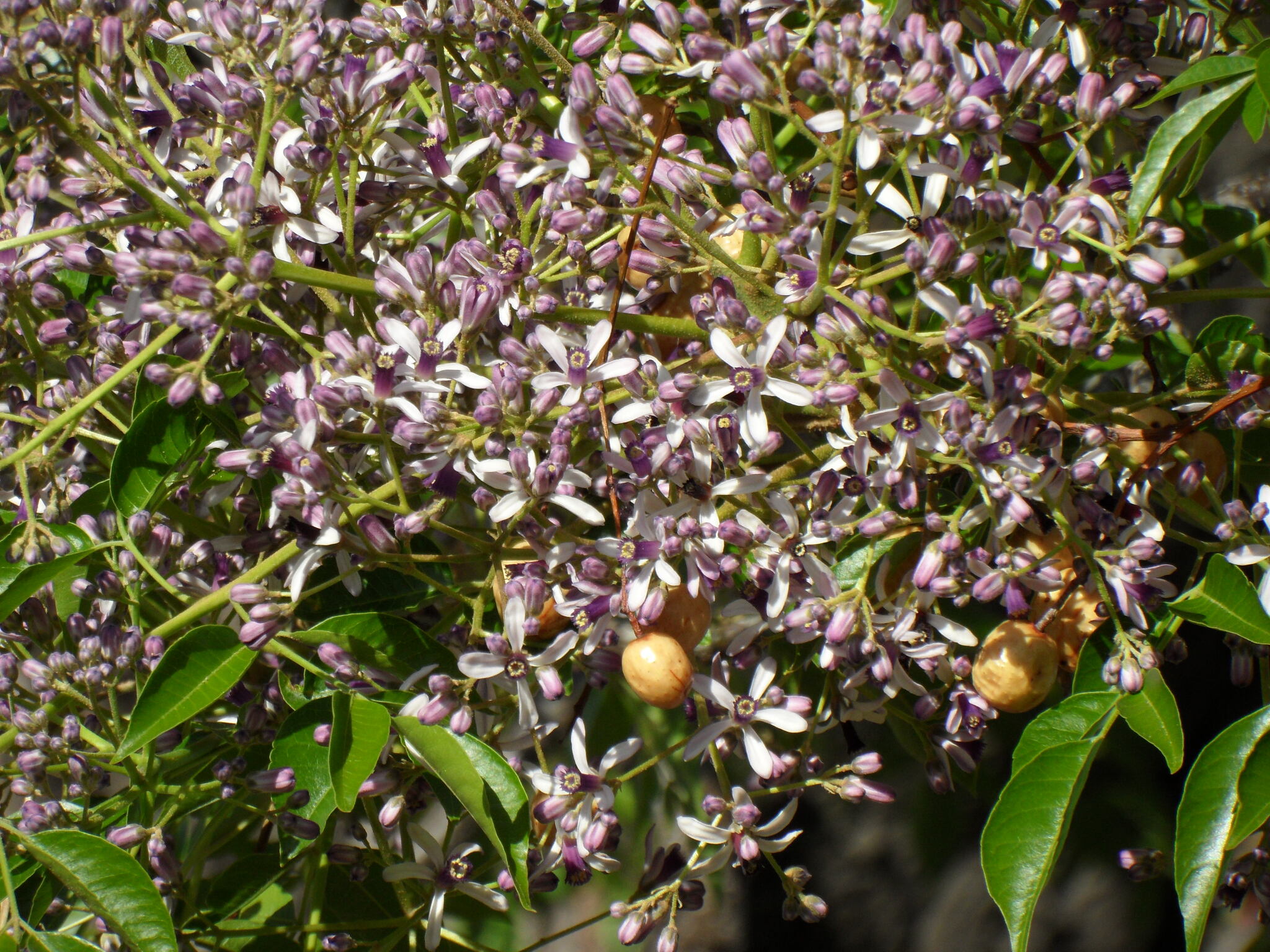
From the Greek melia — a name used for the ash, which has similar leaves.
Deciduous trees or shrubs. Leaves 2-3 times pinnate. Leaflet margins toothed. Leaf stalks with paired glands at the base. Flowers bisexual or male. Calyx 5-lobed. Petals 5-6. Stamens 8-10, tubular, with a ringed nectary. Ovary of 4-8 chambers, each with 2 ovules. Fruit fleshy and indehiscent.
Seed and hardwood cuttings.
The timber of some species is used for construction; the bark and leaves have insecticidal and medicinal properties; the fruits are used as ornamental beads.
Leaves compound, divided 2-3 times; stamens united to form a tube.
3 species from the Old World tropics.
Mabberley (1984).
Source: (2002). Meliaceae. In: . Horticultural Flora of South-eastern Australia. Volume 4. Flowering plants. Dicotyledons. Part 3. The identification of garden and cultivated plants. University of New South Wales Press.
